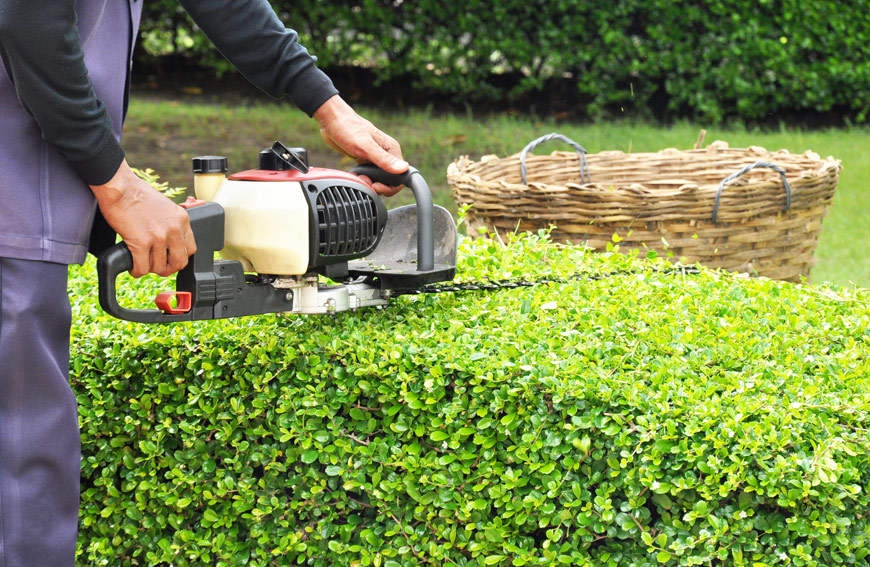A lot of landscapes have shrubs occupying them. Shrubbery is a great way to add luxurious greenery to your yard. Not only does it add an appealing aesthetic but it also adds more value to your home. They are also super easy to grow and are a fantastic way to make your yard look stunning. One of the best things about shrubs is that they don’t need a lot of maintenance. The only thing it needs is some pruning in order to maintain its shape and appearance. However, pruning your shrubs can be tricky if you don’t know the proper technique, knowledge, or have previous experience. This can result in causing unnecessary damage. Five Star Tree Services is going to go over all you need to know about shrubs and how to properly prune them!
When you prune shrubs properly, there are a lot of benefits that come with it. These benefits can include the following:
-A healthier plant
-Bigger and better flowers
-Fuller greenery
It’s important and an essential part of growing your shrub, to know the appropriate time to trim your shrub and you also need to know the right way to cut the branches. If you improperly prune your trees or shrubs, you have the potential to cut off the flowers that would have come up the following year. You can also potentially stunt the growth or kill it. Which is why it is important to take the time to properly learn proper pruning.
The first step to successfully prune is to know when the right time is. You can prune a lot of shrubs in the spring, or as early as late February or early March, that bloom in the summer, this includes summersweet and rose-of-Sharon. Pruning at this time will help larger flowers appear, although there might be fewer in the first year. You are essentially helping the plant focus more of its energy on the remaining flowers. You should also look into pruning spring flowering shrubs as soon as their flowers are gone. Doing this will produce new branches, as well as buds for the remainder of the growing season. If you miss your chance to prune, you will need to wait until all the flowers turn brown.
Tools
You will find that there are quite a few tools that you can use to prune with. And don’t even think about using kitchen scissors. These are not adequate for proper pruning. You will see that all pruning tools have an arc-shape to the blades. This makes it easier to cut through the branches. Some of the tools include:
-Scissor action pruners: that have 2 sharp blades which can slide past each other.
-Anvil cut pruners: that have a long single blade that slices through a wide and flat surface.
-Hedge clippers: these have long and straight blades that can cut through small green branches (used for shearing formal hedges).
-Pruning saws: these have different blades that are different shapes and sizes, you can change the blade to either cut through larger branches or small trunks.
Just like kitchen knives, always make sure to keep the blades sharp. This produces the best results and makes it easier for you to cut through some of the thicker and more difficult branches. You should also oil your blades regularly. After each use, make sure to properly disinfect and clean all the blades you used. This will help to prevent any diseases your plants have.
Technique
Now that you know, and hopefully have, the proper tools, it’s time to work on your pruning technique. We are going to go over 5 techniques to use when prune your shrubs. It’s also ok to combine some of these techniques to get the result you are looking for. The techniques are as follows:
Shearing
When doing this, you only want to cut the branch tips. For best results, use on formal hedges, for it changes the shape naturally and will encourage thick exterior growth.
Pinching Back
The only tools you need for this method are your fingers. All you need to do is pinch off any terminal branches, which will encourage the growth of lateral branches. This technique also helps to prevent future pruning.
Thinning
You are going to want to remove branches but leave any terminal buds. What you need to do is locate the branch collar, this is where the branch meets the stem and creates a bulge. When you cut, make sure to not leave a stub. Doing this will help with the development of a more open shape and it doesn’t require significant changes to the growth habits, size, or overall shape.
Heading Back
Kind of like the pinching back technique, with the only difference being that you will require a tool in order to remove terminal buds. You can do this by trimming at an angle, roughly 0.25 inches above the bud on the branch, with the cut sloping down and away. It will stimulate any branches 6-8 inches below to grow. For the branch you cut, it will influence the growth direction of the entire branch. Any bud that faces outward is going to have the best shape.
Renewal / Rejuvenation
This method is when you cut the oldest branches/stems that grow at the base of the shrub. Once cut, you should use the thinning technique, which promotes growth. Use for overgrown shrubs that are not blooming properly.
Do and Do Not
Make Sure to Do These
Use The Appropriate Tools
For the health and prosperity of your shrubs, it is important to invest in the proper tools needed to maintain them. In order to make sure that their shape stays nice, the tools listed above are the best for your shrubs. Proper care of these tools is also important. In order to keep them in good working order and prevent any rusting from happening, you need to look after them to maintain their integrity. For instance, a hand pruning saw should be kept sharp, well lubricated, with its handle oiled.
Know When To Prune
Each species of shrub needs to be pruned at a different time. As an example, never prune any shrubs that flower in the spring when it is fall or winter. If you do this, it will affect their growth. It is important to take the time to properly research this kind of information and make an accurate pruning schedule for each of your different shrubs. Some common spring flowering shrubs include:
-Forsythia
-Azalea
-Beautybush
Utilize A Shrubs Natural Shape
For easy maintenance, use the natural shape your shrub wants to grow. Before you go and buy a shrub, look into how it naturally grows and what it looks like. This helps for planting purposes and what it will look like fully grown. This will also tell you what techniques you should use and the display potential.
Only Pune ¼ of Shrubs Each Time
To ensure that your plant thrives and has a healthy life, we, and other experts, recommend only trim back, at maximum, ¼ of the plant’s size. Excessive pruning can cause growth sooner than it should and it can also make the branches grow in chaotic directions, resulting in different problems. Try cutting small sections. This will be enough to provide everything the plant needs.
Make Sure to Not Do These
No Fall Pruning
We never recommend pruning any shrub in the fall, regardless of what type it is. Doing this can potentially trick the plan into a late-season growth. This does not leave it enough time to get ready for the winter months and will not allow it to harden properly. This causes weakness in the branches, allowing it to be easily damaged over the winter. Wait until it is completely dormant to do any sort of trimming before the spring.
Don’t Let it Overgrow
You might think that a thick bushy shrub is a good thing, however, if a shrub has a compact center, it will not be able to get adequate air circulation. Whereas shrubs that are less dense tend to get better light and air circulation to all their branches and leaves. In order to tame a bodacious shrub, trim roughly 1/3 of the side branches, specifically where they connect to the main stem. For shrubs with multiple stems, cut the branches at the ground level. This thinning will help it get enough air and light to all its branches and leaves.
No Cuttings Left
For side trimming, cut ¼ inch of the main stem. If you cut unnecessary long branches, you are making it more susceptible to an infestation or other diseases. Proper pruning helps the shrub to grow properly and heal better.
How Five Star Tree Services Can Help
Our team here at Five Star Tree Services is here to help you with this tricky trimming. Leave all the work to us, so that you don’t have to remember all these things, like timing and proper branch length. We offer outstanding services, such as our Richmond Hill Maintaining Shrubbery service. If you have any shrubbery you would like maintained, give us a call at (416) 990-3355!


